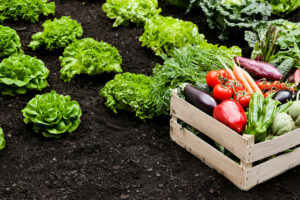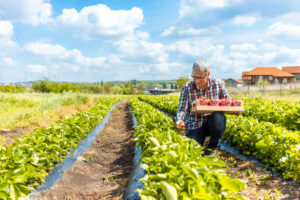Cultivating healthy crops starts from the ground up—literally. The secret to bountiful harvests and thriving plants lies in the quality of the soil beneath them. But with modern agricultural practices and environmental challenges, soil health often takes a backseat, leading to issues like erosion, nutrient depletion, and poor plant growth. Let’s dig in—pun intended—if you want to know how to improve soil health and overall soil fertility, read on to learn more.
How Do You Know If Your Soil Is Not Healthy?
Soil health refers to the ability of soil to promote crop growth, support microorganisms, and perform essential functions such as nutrient cycling and water retention. Here are some telltale signs that your soil might not be in good shape:
- Poor Plant Growth. If plants in your garden or field struggle to grow, appear stunted, or fail to thrive despite adequate watering and care, the soil may lack essential nutrients or have an imbalance.
- Compacted Soil. Healthy soils should feel loose and crumbly, allowing air and water to flow freely. If your soil feels hard, dense, or difficult to dig into, it’s likely compacted.
- Poor Drainage or Standing Water. Soil that retains too much water or allows it to pool on the surface can indicate poor structure or an imbalance in nutrients.
- Discoloration or Odor. Good soil typically has a rich, earthy smell and a dark color due to its organic matter content. Soil with an unpleasant odor or a grayish hue may signal waterlogging, low soil nutrients, or soil degradation.
- Excessive Weed Growth. While some weeds are common, excessive or aggressive weed growth can signal nutrient imbalances. Weeds thrive in disturbed or unhealthy soils, often outcompeting desired plants.
- Crusty or Eroded Surface. A crusty surface that seals over after rain or irrigation indicates poor soil profile and a lack of organic matter. Similarly, visible signs of soil erosion, such as gullies or loss of topsoil, are red flags for declining soil health.
- Lack of Earthworms and Soil Life. Earthworms and other organisms are indicators of a thriving soil ecosystem. If your soil lacks visible signs of life, it may be too compacted, dry, or nutrient-deficient to support these organisms.
- Yellowing or Wilting Plants. Yellowing leaves, weak stems, and wilting despite sufficient water are often signs of nutrient deficiencies or improper pH levels in the soil.
Ways to Restore Soil Health
If you notice any dead grass or other signs above and you suspect that your soil is not viable for planting, you can improve the soil using the following steps.
Add Organic Matter
Adding organic matter like compost, organic mulches, or aged manure can enrich the soil with essential nutrients and promote microbe activity, which is vital for nutrient cycling and soil function. Compost, decomposed plant material, and manure are excellent sources of nutrients and improve soil quality, structure, and microbial activity.
Mulches also help in soil aggregation, creating air pockets that improve structure and allow water to penetrate more efficiently.
Use Cover Crops to Protect Soil
Planting a cover crop is a proven method in sustainable agriculture for protecting and restoring soil. These plants shield the ground from erosion, retain moisture, and provide habitat for beneficial soil organisms. Cover cropping with clover or ryegrass can be particularly effective in soil restoration as they prevent weed growth and overall soil health.
Adding cover crops also improves water retention and regulates soil temperature. By keeping the soil covered, your soil remains green and vibrant, even during dry spells. Having a soil cover also improves soil structure and increases organic matter on your lawn.
Practice Crop Rotation
Crop rotation is a timeless practice in productive agricultural system. Alternating crops with different nutrient needs and root structures prevents soil nutrient depletion and reduces the risk of pests and diseases. For instance, rotating nitrogen-fixing legumes with nutrient-demanding cereals helps maintain soil health over time while fostering soil biodiversity. Diverse crop rotations contribute to a sustainable agricultural system.
Leave Crop Residue on the Lawn
Instead of clearing away clippings or leaves, leaving crop residues can help build soil organic matter. These decomposing plant material act as a natural fertilizer, boosting nutrient availability and soil moisture retention. Using organic materials reduces reliance on chemical fertilizers and helps your soil absorb atmospheric nitrogen, further improving its ability to support healthy plant roots and root growth.
Maintaining living roots in your lawn throughout the year is critical for restoring soil health. Roots anchor soil particles, increase soil carbon sequestration, and create channels for air and water movement.
The presence of organic carbon, often supplied by living plants, is another key component of a good soil. It fuels microbial activity and strengthens nutrient retention, ensuring that your lawn’s soil remains fertile and resilient.
Minimize Soil Disturbance
Excessive tilling or digging can lead to soil compaction and disrupt the delicate balance of the soil biota. Opt for no-till or low-till methods to preserve soil stability and improve soil structure. Direct seeding or minimal tillage methods are excellent alternatives to traditional tilling and plowing, ensuring the soil remains healthy and stable.
Enhance Plant Diversity
Planting a variety of plant species like grasses, flowers, and shrubs promotes a thriving ecosystem. Different plants support diverse soil microbes and soil microorganisms, enriching the soil with essential elements and enhancing nutrient uptake.
Improving soil health is not just a matter of adding fertilizer; it’s about creating a balanced, thriving ecosystem beneath the surface. These steps go beyond quick fixes, ensuring your soil remains healthy and resilient against challenges that degrade the quality of your soil.



